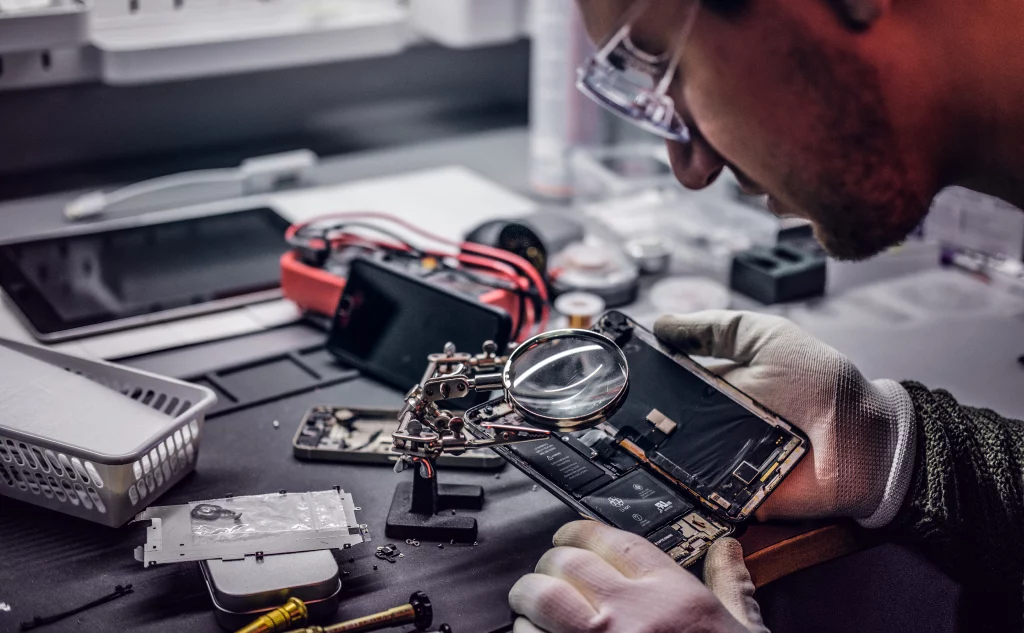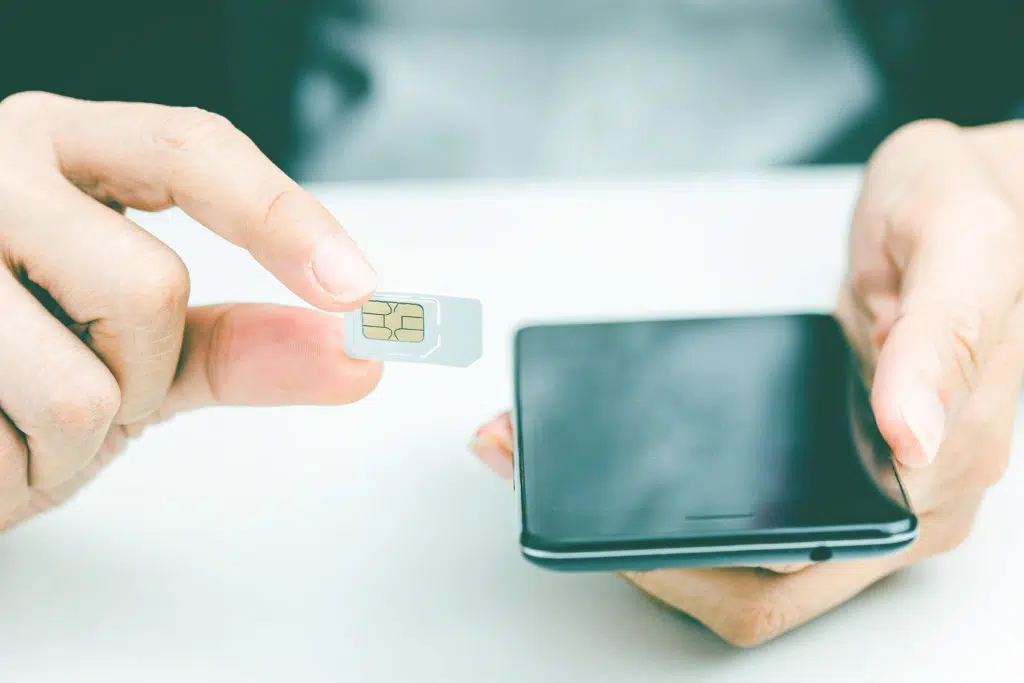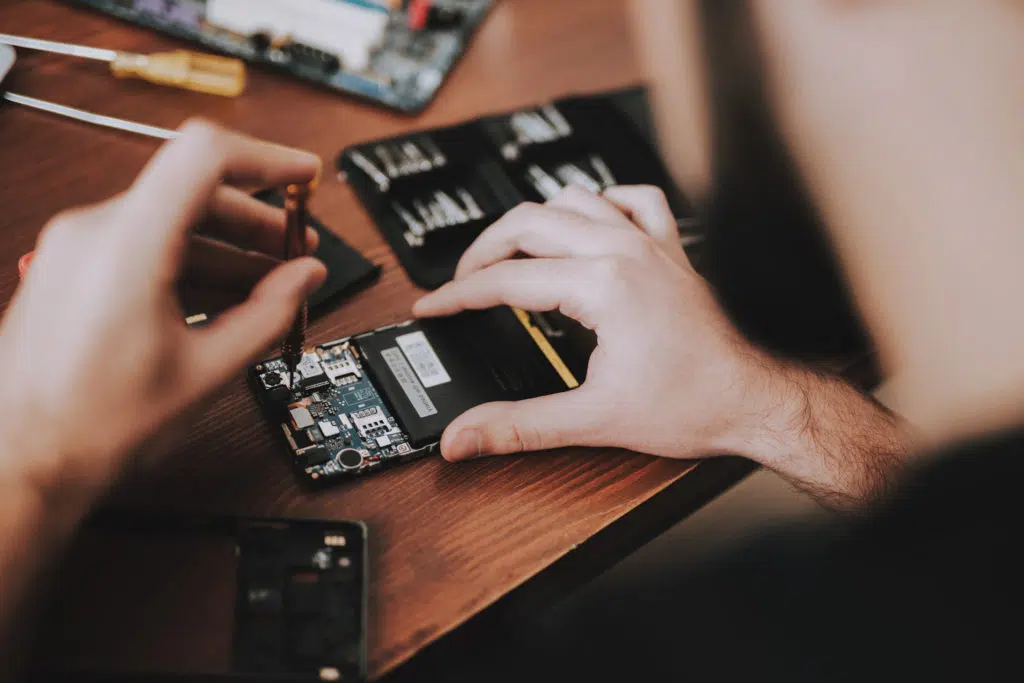Here’s what IMEI, ICCID, MEID, and SEID numbers are and their differences:
These are four distinct serial numbers that you can find associated with most modern smart devices.
Each is attached to a specific piece or set of hardware, and each is encoded into that hardware.
Each has its own designated purpose and function, and you can find all four listed in the settings of your device.
So if you want to learn all about IMEI, ICCID, MEID, and SEID numbers and how they differ, then you’re in the right place.
Let’s jump right in!

What Are IMEI Numbers?

Let’s start with IMEI numbers.
It stands for International Mobile Equipment Identity.
It is marked by a 15-digit number that is assigned to the device.
The IMEI number is used by phone companies to track smartphones (or tablets) on their broad networks.
So, the identifying number can be thought of as something like a call sign or even a Social Security number for the device itself.
When the carrier needs to know specifically which device is in question, the IMEI number serves as an ultimate identifier.
IMEI numbers are assigned by manufacturers.
They are hard coded to the device during manufacturing, which means that this number cannot be changed for a device at some later time, and that’s really the point.
The manufacturer shares the IMEI numbers with the carriers, and all carriers have access to IMEI numbers.
If you change your carrier, your phone will have the same IMEI number.
If you get a new phone on the same account, the new phone has its own distinct IMEI number.
It is important to understand that this number is used for GSM phones.
For the most part, there are two types of carrier networks: GSM and CDMA.
CDMA is primarily used by Verizon and Sprint.
The vast majority of other carriers use GSM networks.
That distinction doesn’t matter too much except to point out that IMEI numbers are specifically generated for GSM networks.
If a CDMA carrier needs to look up an IMEI number, they can, but those carriers will typically emphasize MEID numbers instead (much more on this in a later section).
When it comes to actually using the number, IMEI numbers are used for many identification purposes.
Perhaps the most important of those uses is blacklisting.
If a phone is reported stolen, the authorities will often work with the phone carrier to identify the stolen device.
It will be tracked by its IMEI number since this can’t be changed.
At the same time, carriers will often blacklist devices when they are reported stolen.
This means that no one can use a device with that number on the carrier network.
It’s a way to discourage theft, as the stolen phone will lose its primary functions.
A final bit of important information regarding IMEI numbers has to do with the number sequencing.
The number is assigned by the manufacturer, and manufacturers use specific sequences to ensure numbers are never repeated.
If you know the sequence, then you could use the IMEI number of a device to figure out a lot about it.
You could learn the brand, model, year of release, and specific hardware information, just by knowing this number.
In fact, you can look up IMEI numbers and get all of this information very easily.
What Are ICCID Numbers?

ICCID stands for Integrated Circuit Card Identifier.
This is another important serial number for your phone, but it is different from an IMEI number in many respects.
For starters, the ICCID number is attached to the SIM card rather than the phone itself.
For reference, the SIM card is the device that allows your phone to identify itself on a carrier network and use the network services.
So, even though a carrier can track a phone by its IMEI number, the SIM card is more important for regular communication interactions.
The SIM provides essential identifying information so that the network can successfully route traffic to and from the correct phone.
Your phone can’t place or receive calls, send or receive texts, or use cellular data without a SIM card.
The ICCID number is found directly on the SIM card.
This number is what actually allows the carrier network to distinguish devices that are active and in use.
In other words, the ICCID is the number that lets the SIM card do the things it has to do in order for cellular services to work.
In most cases, carriers designate the ICCID, but some exceptions can exist.
More importantly, ICCIDs follow a standardized format.
The number always starts with 89, for example, because that two-digit code designates the industry and use of the chip used in the SIM card.
If the chip was being used for a credit card, it would start with a different number and not be an ICCID number.
Similarly, there is a country code that forms part of every ICCID.
Ultimately, the carriers only assign a segment of the ICCID.
That part is what is unique to each SIM card and allows for specific identification.
The most important thing to remember about ICCIDs is that they are attached to the SIM card.
If you ever swap or replace the card, your new card will have a different ICCID number.
Normally, you don’t need to know this number; the carrier tracks it automatically.
But, if you are ever trying to establish a SIM identity, or if you happen to need the number for strange troubleshooting or another obscure purpose, remember that the number relates specifically to the individual SIM card.
What Are MEID Numbers?

Now we can get back to phone identifiers.
MEDI stands for Mobile Equipment Identifier.
It is usually 14 characters long, and it is attached to your device when it is manufactured.
In function, it behaves a lot like an IMEI number, but it is designed for CDMA carriers.
The use cases between MEID and IMEI numbers are virtually identical
If a carrier needs to blacklist a device, they can do so via the MEID number (or both numbers).
Carriers share this number just like they do IMEI numbers, so MEID numbers can be used for every type of hardware identification beyond just blacklisting.
Here’s the important part to understand when comparing IMEI and MEID numbers.
Most modern phones (and cellular-capable tablets) are built to work on both GSM and CDMA carrier networks.
That means that these devices usually have both an IMEI and MEID number.
All of the major carriers can access databases that list the known IMEI and MEID numbers.
They can also cross-reference the numbers.
This means that any carrier can find a phone by its IMEI or MEID number and match those numbers for the device.
All of this is automated, too.
So, if a carrier needs to blacklist a phone by one of the numbers, it will probably use both identifiers on the ledger.
The same goes for any other function that relies on hardware identification.
So, even though Verizon and Sprint use CDMA service that is paired with MEID numbers, they can operate just fine by looking through IMEI numbers.
The same is true in reverse. AT&T can do what they need with either number because they are properly paired in the datasheets.
You don’t really need to distinguish between these numbers unless you are getting support or doing something that specifically asks for one of them.
You can find both numbers in the settings of your device, and the information accessible from one of these numbers is accessible from either of them.
What Are SEID Numbers?

SEID stands for Secure Element ID or Secure Element Identifier.
This is another long number attached to your phone, and this one is substantially more complicated than the others.
It is usually 192 bits long, which is the same as 48 hexadecimal units.
Ultimately, what that means is that the number is longer, more complicated, and harder to fake than the other three numbers combined.
There’s a reason for this numerical complexity.
The SEID is attached to an NFC chip (which will be explained momentarily).
The SEID number is assigned by the chip’s manufacturer, and it cannot be changed.
So, you can think of a SEID number as being similar to a MEID number, but it’s attached to a different kind of chip.
This all revolves around the NFC chip.
This is the name for the chip that allows you to make contactless payments.
If you have ever paid with an Apple watch at a register and just held it next to a chip reader, that interaction was possible because of the watch’s NFC chip.
The SEID is the identifying number that allows the system to know that the payment in fact came from your watch (or whatever device you used).
The number is commonly referenced for use with Apple Pay, but it is not exclusive with or proprietary to Apple.
Any contactless payment can use NFCs and the chip’s corresponding SEID.
This is why all modern smartphones have contactless payment apps that are available.
NFC chips are standard in phones these days.
The most important thing to know is that the number is essential to allow this type of payment.
It helps to secure the payment information and speed up identification.
Because the number is so complex, it prevents computer systems from randomly generating these numbers for fraudulent transactions.
There are too many combinations, so fraud would only work if the nefarious party already knew the correct SEID.
In theory, this makes SEID payments more secure than other methods that involve personal credit or debit cards.

